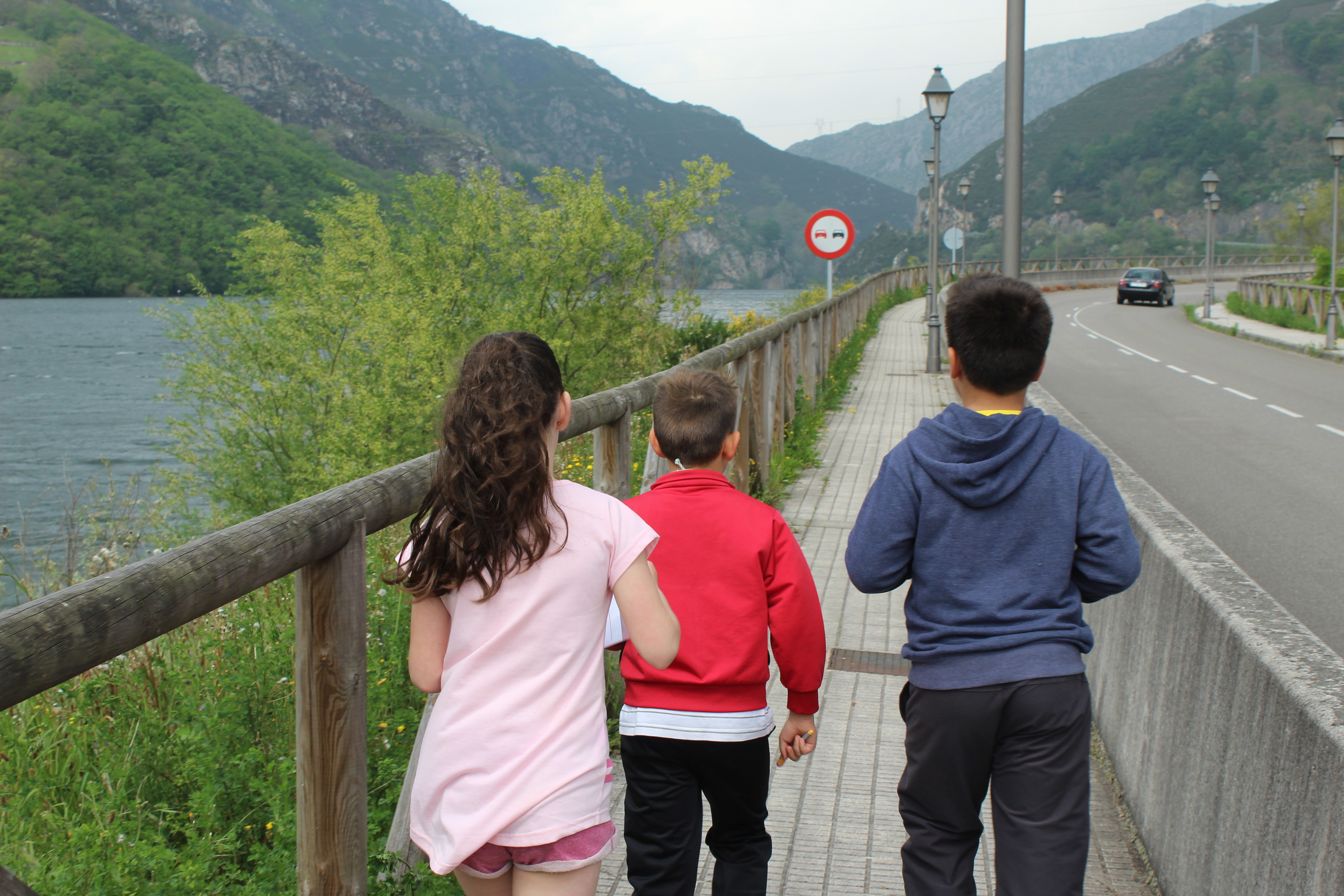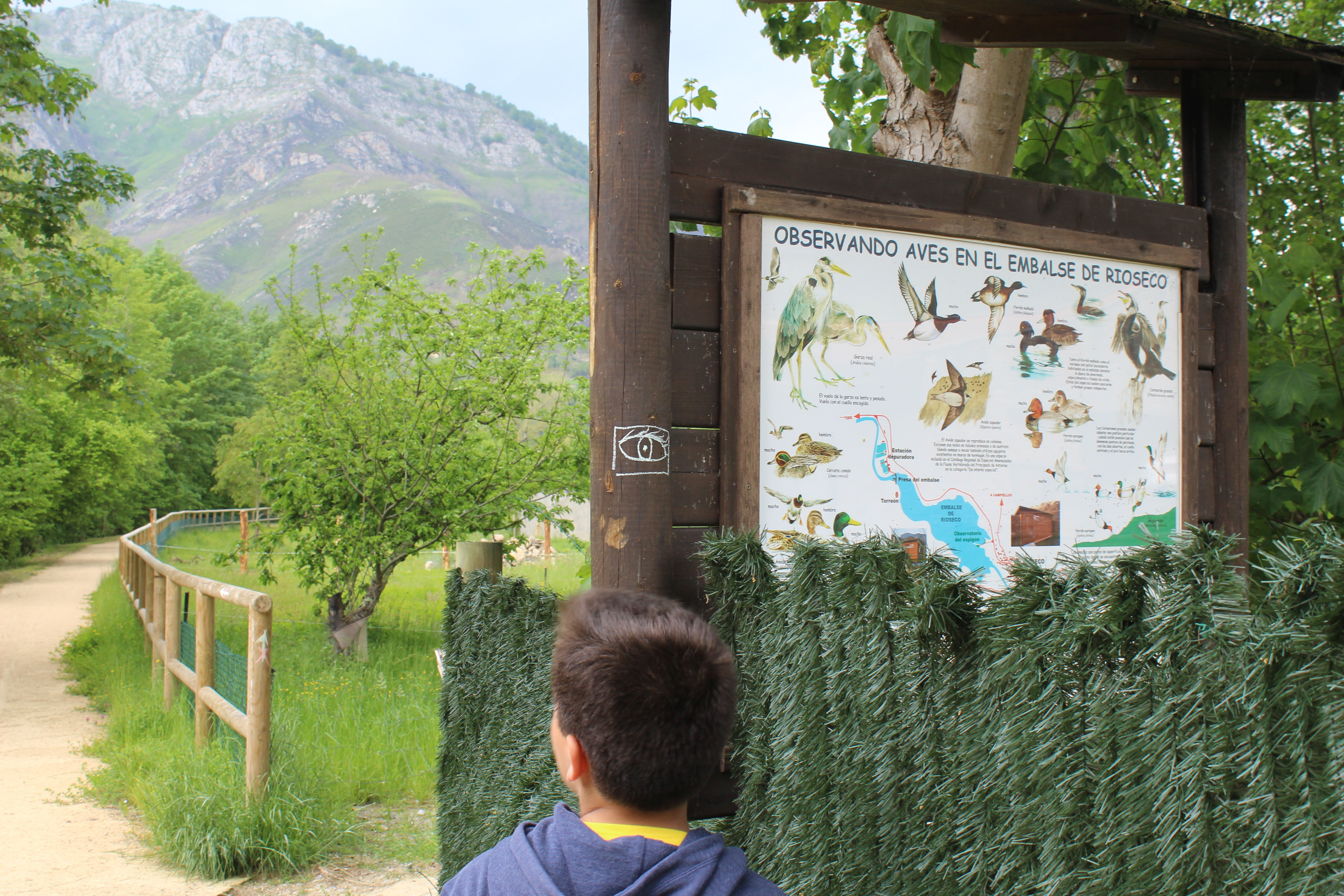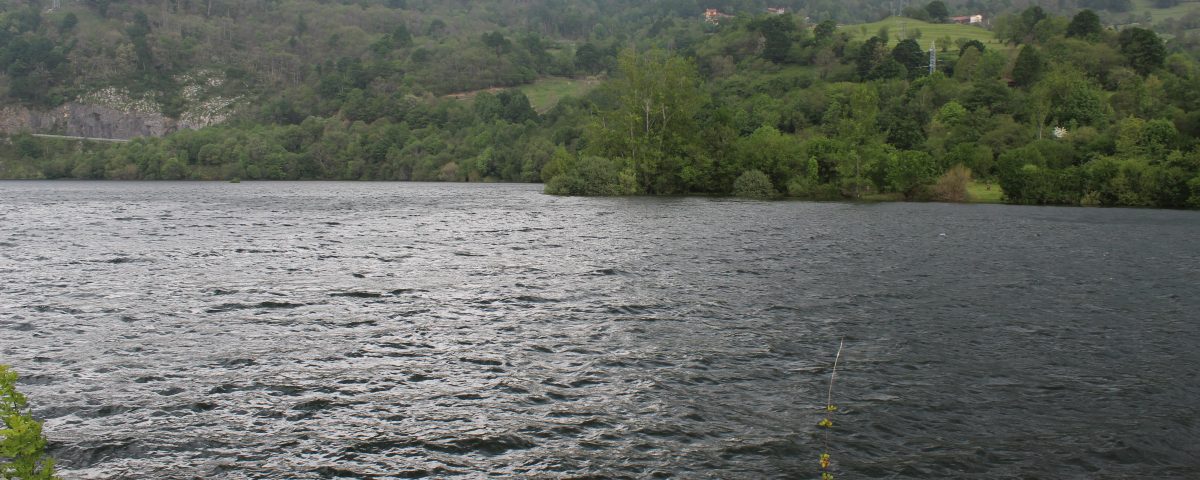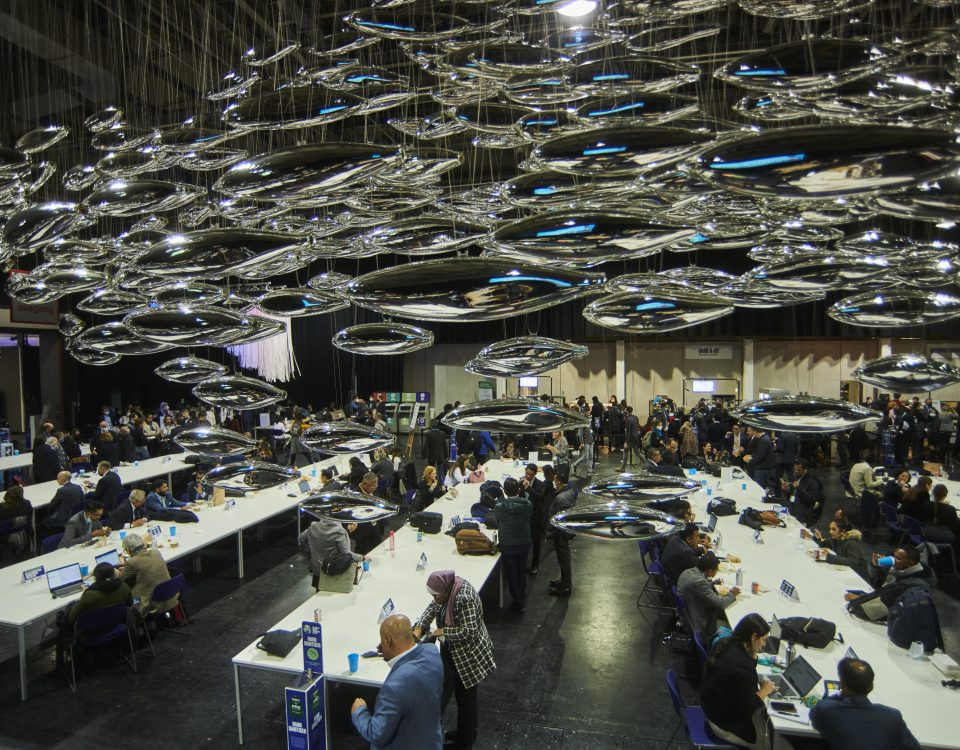
Out with the old and in with the renovated dams
February 13, 2019
New Barrier Tracker App update enables downloading own records
March 20, 2019

Children of Rioseco, one of the villages inside the Biosphere Reserve located by Rioseco reservoir, playing "The Fish Gymkhana" - one of the activities proposed in AMBER "Education materials" ©Laura Clusa
Impact of local knowledge on new hydropower plans
The regional authorities have now officially stopped the plan of building another dam in the Nalon River. The AMBER project has contributed in the decision process to advise and communicate about the high natural value upstream of the river.
The Nalón River, located in the central part of the province of Asturias (Bay of Biscay, North Iberia, Spain), belongs to the largest basin of this region. The Nalón valley shelters the most famous mining zone of the region, especially in the middle part of the river. This part was and still is degraded, although the upper part has high natural values, and is even recognised by Unesco as a Biosphere Reserve. Migrating fish, however, are having a hard time swimming upstream because of existing dams. And yet, a new dam was planned for water and energy supply. In May 2018, the regional parliament decided to cancel the plans and now the regional government has confirmed the dam will not be built.
The AMBER partner, the University of Oviedo, developed and applied an advanced technology to identify the species in the river and how populations along the river are connected (using an eDNA molecular kit). From the side of social sciences the team has contacted the local stakeholders and have collaborated with city councils inside the area. They developed and validated a questionnaire and survey to know the opinion of the people inhabiting Upper Nalon about the reservoirs. Eva Garcia Vazquez, leading the project within the University of Oviedo, says: “I believe our activities have made people in the region more aware of the value of the river and what the consequences of the new dam might be. We have to be modest about the difference that our AMBER project has made, but for certain it has helped to make a well thought out decision on what is best for nature and people in the area.”
At one of the reservoirs, Eva and the team played the AMBER educational game, so that children could experience what trout could feel when they counter a barrier. They also talked to fishermen (representatives and directly) asking for their knowledge and collaboration. They helped with knowledge of the species in the area, identifying which were native and which were invasive. They also helped with collecting organic material such as scales of the fish to get more information on the DNA of the fish in the reservoirs. The information of AMBER have been used in newspapers and blogs and that has most likely supported the preliminary decision to stop plans for the dam.
Eva:”As scientists our role is not to say what is right or wrong, but help making people, especially in the regions itself, to know and understand consequences of new infrastructures with high impact. I’m glad that our approach has contributed to that knowledge and happy to share our approach with other regions dealing with similar decisions.”
Author: Arjan Berkhuysen




